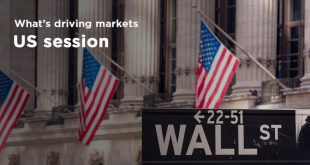According to the US Bureau of Labour Statistics, there were 8.827 million job opportunities in July, far fewer than the predicted 9.465 million, while consumer confidence declined. The probability of a Fed rate hike in September has decreased to just 13.5%, according to the CME FedWatch Tool, while the probability of one in November is now 43.3%.
The US Nonfarm Payrolls report for August and other important US economic indicators are being watched by market participants in case they indicate further volatility in gold prices.
Investors reduced their expectations on future rate increases by the US Fed as a result of declining US Treasury bond yields following data. Gold therefore touched a daily low of $1,914.57 and is currently trading at $1,937.89 per troy ounce.
Job Openings for July were significantly below June’s 9.165 million and considerably below the projected 9.465 million, according to data from the US Bureau of Labour Statistics. This, along with a decrease in the quit rate, implies that Americans are less optimistic about their chances of finding new employment.
Meanwhile, new information showed that the Conference Board’s Consumer Confidence survey showed deteriorating attitude, as was clear from the report from August. The statistics, which came in at 106.1 and were significantly lower than the anticipated 116 and July’s 114, highlighted the consumers’ growing sense of concern. The Conference Board’s senior economist, Dana Peterson, stated: “Consumers were once again concerned with rising prices, particularly for groceries and gasoline.”
It is important to keep in mind that the US labour market is gradually relaxing, but not at the rate that the Fed had first anticipated. Jerome Powell’s remarks on the labour market’s tightness, which favoured rate increases, might be saved until the September meeting. However, a cautious approach is advised given the impending US Nonfarm Payrolls report for August, which is forecast to show an increase of about 170,000 jobs.
As traders lower their expectations for future Federal Reserve rate hikes, an unexpected increase could cause volatility in the financial markets.
The odds given by the CME FedWatch Tool for a rate hike to the range of 5.50%-5.75% at the September meeting are declining, sitting at 13.5%, while the odds for the November meeting are roughly unchanged at 43.3%.
As a result, the US Dollar Index (DXY) continues to reflect that the dollar is still weak. The DXY, which gauges the value of the dollar in relation to a basket of six different currencies, is down 0.53% at 103.433. Falling US bond yields, which hurt the value of the US dollar, are a reflection of factors including speculators anticipating a less hawkish Fed.

 Noor Trends News, Technical Analysis, Educational Tools and Recommendations
Noor Trends News, Technical Analysis, Educational Tools and Recommendations



